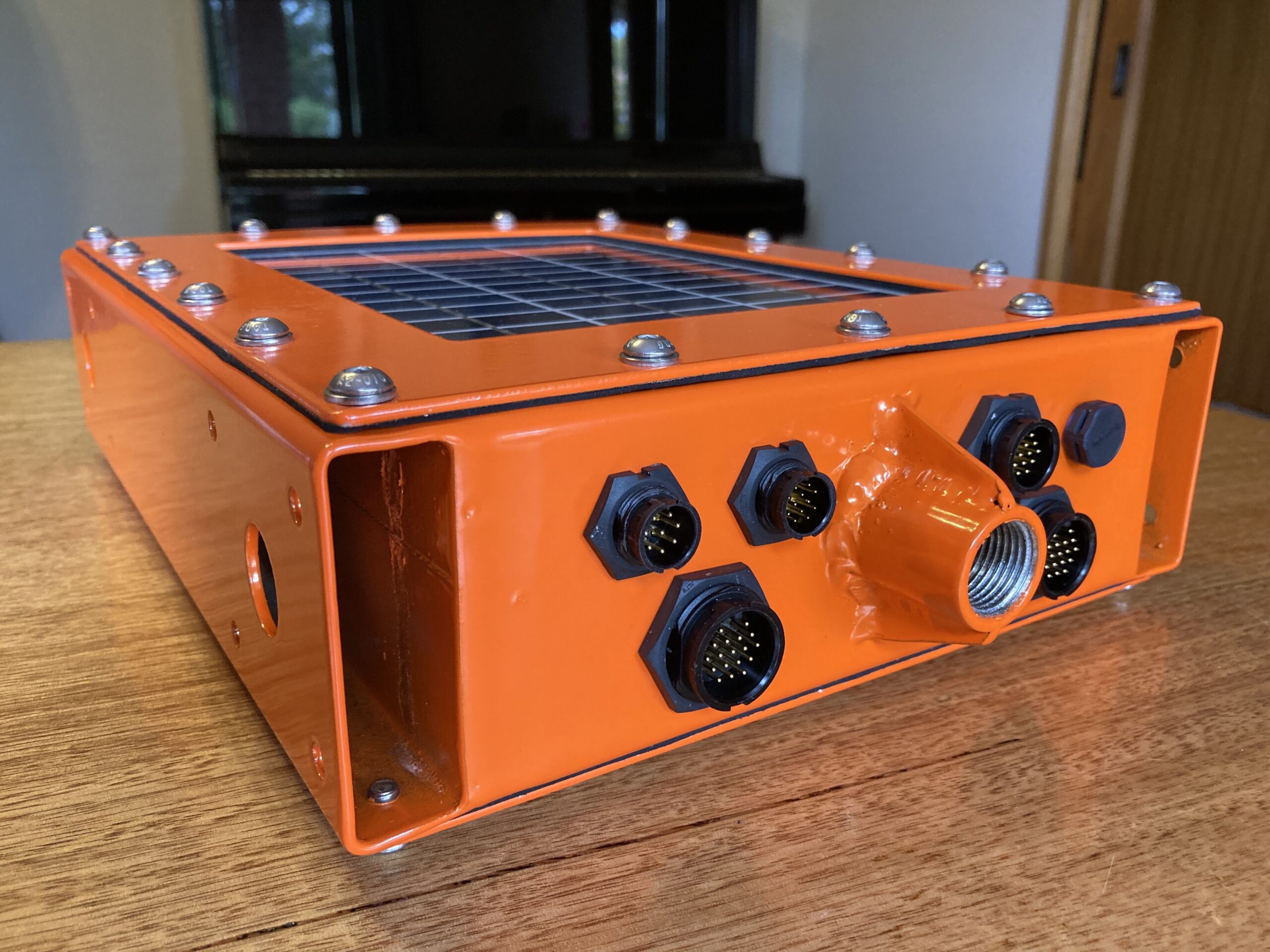This feels like somewhat of a confession, our remote temperature monitor is actually an open environmental monitoring station – A waterproof, programmable, expandable, Arduino-compatible 4G research computer for remote data-logging and peripheral control.
That’s a mouthful I know. That’s why all communications so far have been about monitoring the temperature of organics, which is the first commercial application for the device.
It’s on the tin though. Flip the unit over and it clearly states on the first line of the compliance label in all caps: REMOTE MONITORING AND CONTROL SYSTEM. That’s what RMAC stands for.
Emulating Tetris on a ‘Compost Temperature Sensor’
When we attend an expo we like to showcase this programability and expandability with some fun. We set up two devices, one with the temperature probe on the end and then another plugged into a TV via a special harness.
Then we strike up conversations by inviting people to play the original Tetris, explaining it’s being generated by the Rhino Instruments RM1.
The intent is to show the capability of this device as being able to do a diverse set of tasks. Sure, the Tetris application isn’t particularly useful for outdoor research, but it’s shows the device has enough latent power to emulate a gaming console. Using the expansion port and a custom harness it’s also:
- generating and outputting NTSC television signal
- generating and outputting audio
- sensing infrared commands from a standard Apple TV remote
- demonstrating Arduino-compatibility using an existing software library
Watch the demonstration below to understand the potential for other applications.
What’s with all the ports buddy?
The feature image shows the back of the unit. There’s a lot going on there and yet to measure temperature we’re only using two pins. What’s with that?
We built this device because we couldn’t buy it, and to sell it widely we needed to go through compliance testing. That process is gruelling, especially for a startup. That pushed us to think about all the other things we’d like to measure down the track and making sure we had access to those protocols and pins without having to poke new holes in the enclosure.
Researchers, scientists and others who want to measure and collect environmental data shouldn’t have to build a new device every time they want to capture a new type of data. Yet this largely seems to be the status quo in IoT. A specific device for this and a new device for that. What we were looking for and couldn’t find was a general purpose computer built for outdoor conditions and power constraints.
Environmental Sensor Development Kit (ESDK)
To open the device up to new applications we’ve come up with an Environmental Sensor Development Kit.
It’s all the bits and bobs we use to plug into and upload the firmware to the device. Plus the plugs you need to start making your own harness and interfacing with other sensors.
We have the industry favourites available on the back – Serial Peripheral Interface (SPI), Inter-Integrated Circuit (I2C) Protocol, 1-Wire Protocol, plus access to power. Thousands, if not tens or hundreds of thousands of sensors use these protocols.
Combined with the thousands of open-source Arduino libraries and a 4G modem, this give you the ability to jump straight into developing your own remote sensing project without having to worry about waterproofing or a power source.
This idea was inspired by growing up in the early era of personal computing, when general purpose computing took off with the Apple II and IBM PC. By today’s standards these were essentially embedded computers without the modern idea of an operating system. No memory protection and every aspect of a computer was accessible rather than locked down. While I do want these modern features and security locks on my desktop computer and phone, there are practical limits to putting a regular PC or Raspberry Pi with a full-blown operating system out in the weather. A different approach was required that still adhered to the spirit of open computing.
For researching and outdoor data collection you need the low power requirements of an embedded device combined with:
- a waterproof enclosure
- a reliable source of power
- communication capabilities (eg: LTE/4G/5G)
- programmability (ability to upload custom code)
- expandability (ability to add peripherals without compromising waterproofing)
That is what we offer.
To get started with the RM1 combined with the Environmental Sensor Development Kit you’ll need to get in touch. Please do, we’d love to hear what you want to do with our open research instrumentation.
